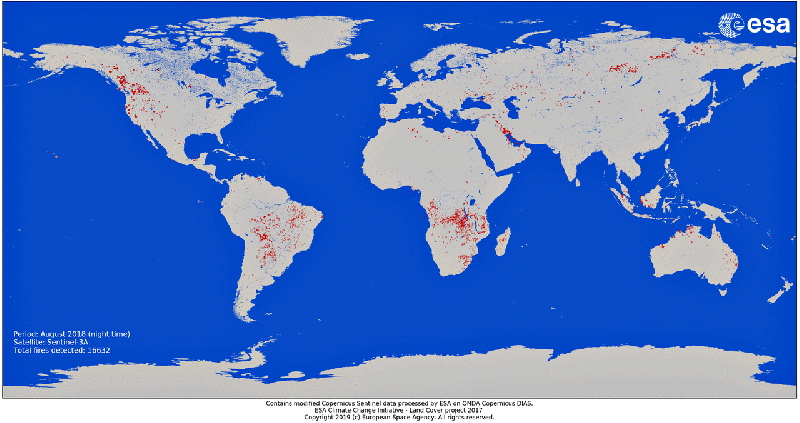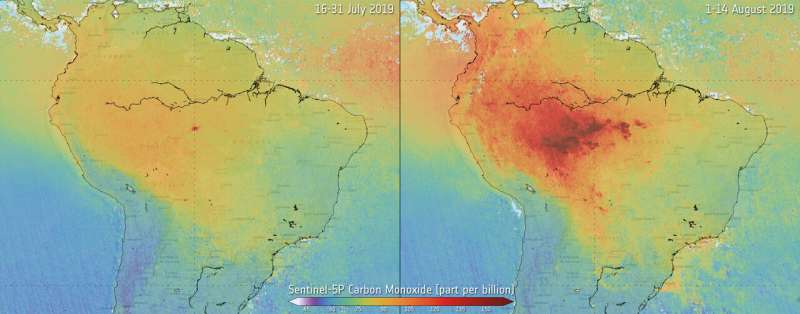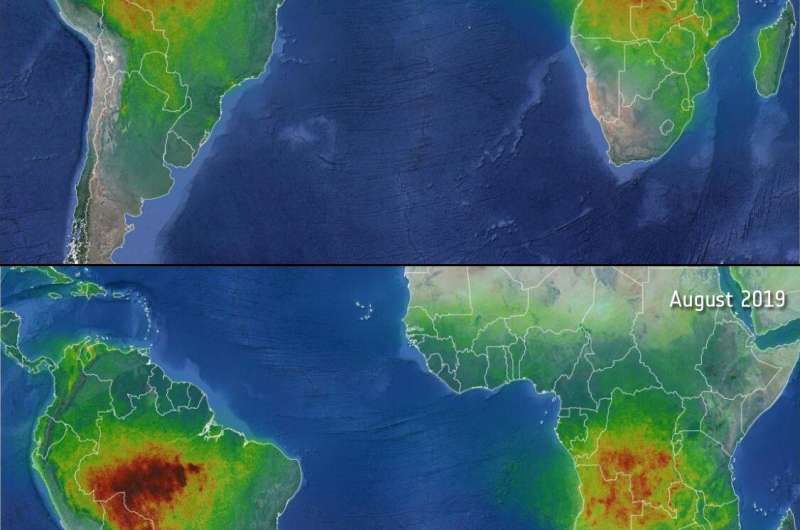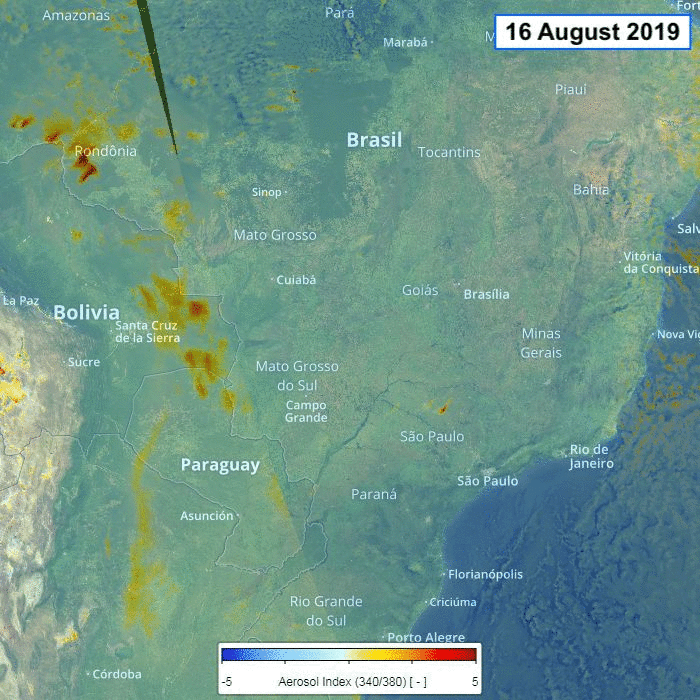Monitoring air pollution from fires

The wildfires that have been devastating the Amazon rainforest have been international headline news over the last weeks. These fires are not only an environmental tragedy in terms of lost forest and biodiversity, but they are also leaving their mark on the atmosphere, affecting air quality and, potentially, the global climate.
In light of the climate crisis, the loss of swathes of forest is a serious concern. Everyone on Earth benefits from the health of rainforests like the Amazon. Trees acts as sinks for carbon, absorbing and storing atmospheric carbon dioxide—one of the main greenhouse gases—and therefore helping to cool the planet.
Consumed by fires in recent months, forests are releasing much of the carbon dioxide they once stored in their biomass back into the atmosphere. However, there are also a host of other pollutants entering the air. The Copernicus Sentinel-5P mission is being used to closely monitor the changes in air quality.
The satellite carries the state-of-the-art Tropomi instrument to map a multitude of trace gases such as nitrogen dioxide, ozone, formaldehyde, sulphur dioxide, methane, carbon monoxide and aerosols—all of which affect the air we breathe.
Using data from Copernicus Sentinel-5P, the first image shows the difference in carbon monoxide in the air between July and August. This pollutant is often associated with traffic, but here we see the increase in atmospheric concentrations following the fires. Naturally, once in the air, it can cause problems for humans by reducing the amount of oxygen that can be transported in the bloodstream.

The next image shows how much formaldehyde was released from fires this year compared to 2018. The image also features Africa, which has also experienced more fires than last year. Formaldehyde is an important intermediate gas in the oxidation of methane and other hydrocarbons. While it is short-lived in the atmosphere, it reacts chemically to become a major source of carbon monoxide—another harmful pollutant as just noted.
The animation shows smoke and aerosols over Brazil. When breathed in these small particles can lead to cardiovascular conditions and lung problems. Aerosols also affect the climate by scattering and absorbing of incoming sunlight and trapping of outgoing long-wave radiation—and hence warming the planet. On 19–20 August, the smoke from fires got so bad that the day appeared to be turned into night as São Paulo was plunged into darkness.
With both air pollution and climate change major global concerns, satellites play a key role in monitoring the constituents of the atmosphere so that authorities have access to accurate information to help respond to incidents such as these recent fires and, ultimately, formulate environmental policies.

While Copernicus Sentinel-5P monitors air quality, one of the satellite missions in the same Copernicus family, Sentinel-3, is used to detect fires around the world. Data show that in August 2019, there were 79000 fires around the world compared to 16632 in August 2018.
Josef Aschbacher, ESA's Director of Earth Observation programs, said, "Over the last months, we have observed more and more vegetation fires on our planet, in Brazil, Siberia, Greenland, Africa, Spain, Greece and many other places. Our Earth observation satellites keep a close eye on them in order to inform people and politicians with undisputed facts about our changing planet."

Provided by European Space Agency



















